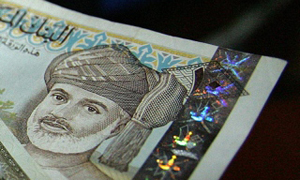Moody`s Indicates Omani Banks` Outlook Stable
Banks in Oman are expected to remain stable over the next 12 to 18 months.

Banks in Oman are expected to remain stable over the next twelve to eighteen months, with higher revenues and moderate credit growth, according to Moody’s Investors Service. The improved operating environment would support banks’ asset quality, drive credit growth – likely to be between 10% and 15% over the outlook horizon – and increase bank revenues. Moreover, non-performing loans would likely remain at low levels over the outlook period, at 3%-4% of total loans.
The stable outlook is also underpinned by the sector’s solid capitalization buffers.
The stable outlook is also underpinned by the sector’s solid capitalization buffers. The system had a combined Tier 1 ratio of 13% as of December 2010, a sufficient cushion to absorb expected credit losses under Moody’s base-case and stress-case scenarios. The banks’ earnings-generating capabilities are adequate, with pre-provisions earnings to average assets likely to approximate 2.5% during 2011. Profitability would likely be supported by healthy interest margins, moderate credit growth, low provisioning requirements and an efficient cost base, despite rising staff costs.
Liquidity reserves are significant, with liquid assets amounting to 25% of total assets. The deposit-funded system would continue to benefit from strong ties with the Omani government, which contributes around 30% of sector deposits, forming a stable, although concentrated, funding source, as per the rating agency.
However, Moody’s also noted that credit risk remains high, due to the elevated single-party exposures (the top 20 loans are around 150% to 200% of banks’ Tier 1) and exposures to the construction and real estate sector, which is showing signs of distress. In addition, the concentrated nature of private wealth in Oman and the small size of the banking system (US$ 41 billion at end-2010) raise the risk of contagion between banks in case of a corporate default, because large private and corporate customers typically have exposures to several banks within the system. In addition, a key structural weakness is Omani banks’ limited geographic diversification and high dependence on the domestic economy, which in turn relies on the volatile oil sector.
The article above has been published as a part of Bank Audi`s MENA Weekly Monitor of Week 37 (2011). It can be accessed via Internet at the following web address : http://www.banqueaudi.com
Image credit: NAZAHA MARKETS